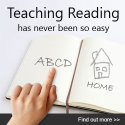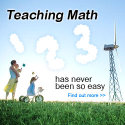Once your child is 4 months old, you can start using Little Reader to teach him to read. Using the word sets that come preloaded with your software, or word sets you have made yourself or downloaded from the BrillKids Forum, create a playlist of 20-50 words (fewer if your child is younger, more if she is older). Err on the side of more words, as you can immediately stop a lesson if your child's attention wanes.
Check your settings to make sure "random” order is selected and "auto-forward" is unselected. Now, you're ready to press play! After listening to a word's pronunciation, read the word to your child, and click to look at the picture or watch the animation. You can replay a sound effect by pressing the down arrow.
Tuesday Moving On
Young children today have less opportunity to become mobile than ever before. Devices such as playpens, strollers and certain walkers all impede mobility in the interests of safety or convenience, slowing the development of children's crawling and walking skills.
As your child's parent, you have an important role to play in encouraging her physical development. Which of the following exercises you try with your child will of course depend on the stage she is at.
Little Math is designed to teach your child quantity recognition in a similar fashion to the Glenn Doman math program. Once your child has learned quantity recognition, you will be able to teach addition, subtraction, division and multiplication, and later, fractions, factors, square roots, algebra... the sky's the limit!

Wednesday: Seeing Spots
To begin with, show your child numbers 1-5 and 6-10 in separate sessions, three times each. For more information, read Doman's How To Teach Your Baby Math. For a more advanced lesson plan, check out the World's Best Education website, created by a mother who is successfully doing the Doman math program with her son.

Thursday Pure Play
Children learn enormous amounts through play, so get ready to explore with your little one! How you play together will depend on the age of your child…
0-6 months
Look for ways to engage your baby's senses. Play "airplane" by holding your baby up and moving him through the air, with your feet on his chest and your hands supporting his arms. Make whooshing noises and talk about the directions you're going in.6-12 months
Play games and sing songs to teach your baby the names of the parts of the body. Sing Head, Shoulders, Knees And Toes while touching each of your child's body parts in turn. Play peekaboo with your or your child's belly button.
12-24 months
Let your toddler have a go at fingerpainting! As she dips her fingers into the paints, name the colors she is using. Then, help her mix two primary colors to make a new color. Talk about how many different colors you can make.
24-36 months
At this age, children become masters of pretend play. Let your child take the lead and set the rules of the game. Role-playing games (doctors and patients, mommies and babies) help your toddler to develop his social skills. Ask him questions while you play these games: "Why did the mommy do that? How did that make the baby feel?"

Friday: Feeling Funky
Nothing beats having fun with music and rhythm – or dancing with your little one! Put on a favorite tune, preferably one with a beat, and get ready to have some fun. If your baby is too young to sit up, you can dance with her in your arms. The gentle swinging, rocking and spinning movements will help to develop your baby’s vestibular (balance) system. Sing along to the music as you dance.
If your child is old enough to sit up, then give him a drumstick or spoon to hold, and encourage him to bash on some baby drums, the bongos, or an upturned pot or pan. If your child is old enough to stand, then kneel down to his level and dance together! Babies in the cruising phase of learning to walk love bending their knees and jigging up and down to music. And don’t forget to sing!

Saturday: Signs of Things To Come
Teaching your baby sign language is a great way to communicate with her before she is old enough to talk. You can buy DVDs (such as Signing Time) or attend a parent workshop (such as those organized by Baby Signs) to get you started. Alternatively, you can simply buy a baby signing book or look up words in American Sign Language (or another sign language) online.
You can start teaching signs from birth, but bear in mind that your child will only be able to sign back from around 10 months of age. Start with a few signs for words you use often (e.g. “milk,” “more,” “all done”). Once you feel confident about using them, add a few more. Although your child will not sign back to you until nearly a year old, he will be able to understand what you are signing much earlier – as young as 3 or 4 months.

Sunday : Going Swimmingly
Young babies naturally love the water – not very surprising when you consider it was their first home! You can make use of this natural fearlessness to introduce your baby to the pool from before 6 months of age. (Some doctors recommend waiting until a baby is 3 or 4 months old, so that the first vaccinations can take effect, and to avoid exposure to chlorine vapor when a baby's lungs are at their most sensitive.)
Your child will not have the coordination to perform swimming strokes until around age three. However, floating, splashing and kicking from an early age will build her strength and coordination in ways that will benefit her on dry land as well as in the pool. Introducing children to water before age two can also prevent a full-blown fear of the water from developing. Such early positive experiences will set the stage for your child to become a competent swimmer when she is older.
Reference: Brillkids.































0 comments:
Post a Comment